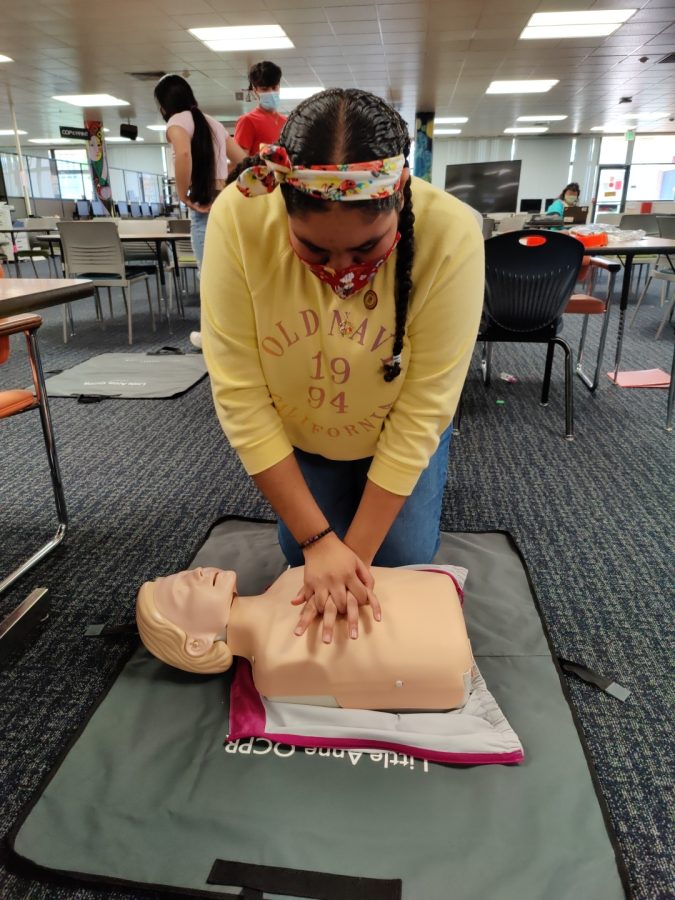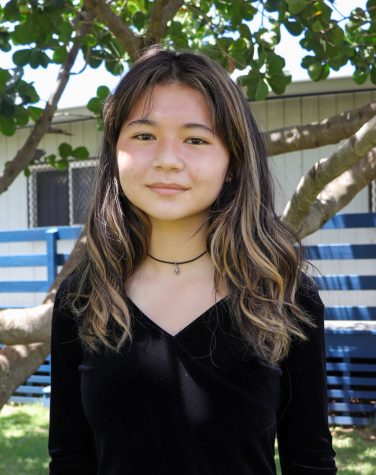Health students learn how to save lives
January 14, 2022
Students in Lynn Hashizume’s health services pathway classes learned how to be heroes this month when they received training in first aid, CPR, and how to use defibrillators from a firefighter from the Moanalua Fire Station.
This was an opportunity for them to become CPR and first aid certified. For the students preparing for the upcoming HOSA (health occupations) state CPR and first aid competition, it was an extra chance to prepare.
“I gained very in-depth instructions on how to perform CPR,” junior Hayley Nuesch said. “The baby and the adult dolls [we practiced one] are very fancy and make noise so I was able to receive detailed feedback on how I did CPR [for each body type].”
Firefighter Tyler Perkins explained what he went over during the training session.
“For first aid, a lot of the stuff we do is preventative measures to keep someone from needing CPR,” Perkins said. “One is recognizing what kind of emergency it is. The main ones could be bleeding control, shock, allergic reaction, those kinds of things.”
For the CPR training, Perkins said that the practiced the basics. These skills included performing compressions and ventilations, pushing techniques, chest recoils, and practicing aiming for 100 to 120 compressions a minute. Students went through a very realistic experience by practicing on adult and infant dolls installed with bluetooth speakers.
“You’re buying time [when doing chest compressions],” Perkins said, explaining that “it’s almost as if the blood flow [in the person] has never stopped.”
“There are differences between the care men and women receive because a lot of them are unsure whether to undress a woman before providing emergency care,” Nuesch said.
“That was really interesting.”
Junior Bliss Soogrim also expressed her surprise at how Hawaii compares with other states when it comes to the percentage of lives saved from CPR.
“I learned how much CPR makes a difference,” she said. “In Hawaii 12 percent [of lives are saved by CPR], but in Seattle [the number is] 80 percent because many people know how to provide CPR [in Seattle].”
Not only did students gain hands-on training experience they also learned facts and statistics about CPR and first aid. Participants were also able to earn a basic level certification upon completion of the three-hour course.
The course was free to the students, as a federal grant paid for the training, Hashizume said.


